In the world of piping systems, understanding the minimum allowable bend radius is crucial, particularly when working with High-Density Polyethylene (HDPE) pipes. This vital parameter ensures that the pipes maintain their structural integrity and performance while navigating bends and turns in installation layouts. Throughout this article, we will delve into the importance of bend radius, the factors influencing it, and the implications of improper bending. By the end, readers will gain a comprehensive understanding of how to effectively plan and implement bending in HDPE piping systems, ensuring optimal functionality and longevity.
What is the Minimum Bend Radius for HDPE Pipe?
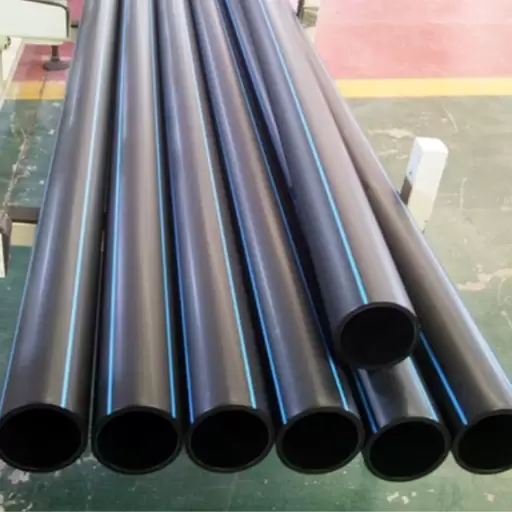
Image source:https://e.51sole.com/
The minimum bend radius for HDPE pipe is the smallest radius at which the pipe can be bent without compromising its structural integrity. This radius is typically determined by the diameter of the pipe and can vary depending on the specific application and manufacturer guidelines. Generally, a common rule of thumb is that the minimum bend radius should be at least 25 times the outside diameter of the pipe. Adhering to this guideline helps prevent excessive stress and deformation, ensuring the long-term performance and durability of the HDPE piping system.
Factors Affecting the Minimum Bend Radius
Several key factors influence the minimum bend radius of HDPE piping systems. Understanding these factors is essential for ensuring proper installation and longevity of the pipes.
- Pipe Diameter: The diameter of the HDPE pipe is a primary determinant of the minimum bend radius. Larger diameter pipes generally require a larger bend radius to avoid stress and potential failure.
- Pipe Classification: Different classifications of HDPE, such as PE4710 and PE100, have varying strengths and flexibility. The specific grade can affect how tight a bend can be made without compromising the pipe’s integrity.
- Operating Conditions: Factors such as temperature and pressure can affect the mechanical properties of HDPE. Higher temperatures can make the material more pliable, while pressure changes may necessitate adjustments in the minimum bend radius.
- Manufacturers’ Guidelines: Each manufacturer may provide specific recommendations based on the material formulation and intended use of their HDPE pipes. Consulting the manufacturer’s guidelines is crucial.
- Bending Method: The method used to bend the pipes—whether through heating, mechanical bending, or manual handling—can also impact the required bend radius. Different techniques may allow for tighter or looser bends.
By considering these factors alongside corresponding technical parameters such as outside diameter, pipe grade, and specific manufacturer recommendations, installers can better determine the appropriate minimum bend radius for their HDPE piping applications.
How to Measure the Bend Radius of an HDPE Pipe
To measure the bend radius of an HDPE pipe, I start by determining the pipe’s outside diameter. I then refer to the manufacturer’s specifications to find the recommended minimum bend radius for the specific pipe grade and diameter. Using a flexible measuring tape, I position it against the pipe to find the distance from the centre of the pipe to the inner edge of the bend at its tightest point. It’s essential to ensure that the measurement is taken along a smooth curve to accurately reflect the true bend radius. By following these steps, I can ensure that the bending process aligns with safe installation practices and the integrity of the pipe is maintained.
Why is the Minimum Allowable Bend Radius Important?
The minimum allowable bend radius is crucial to maintaining the structural integrity and performance of HDPE pipes. Bending pipes beyond the specified radius can lead to kinks, fractures, or other failures that compromise the pipeline system’s reliability. Proper bend radius ensures that stress is evenly distributed across the pipe, which helps to avoid issues like strain hardening or reduced flow capacity. Furthermore, adhering to the minimum bend radius guidelines also aids in extending the lifespan of the pipe and minimizing maintenance costs. In summary, compliance with these specifications is essential for safe installation and effective operation of HDPE piping systems.
How to Handle HDPE Pipe During Installation
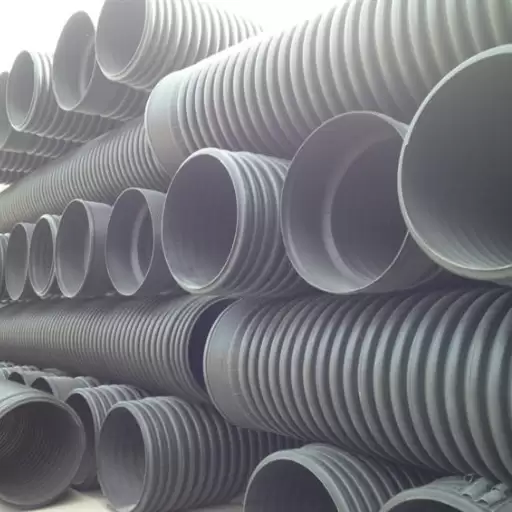
Handling HDPE pipes during installation requires careful attention to ensure both safety and the integrity of the material. First, always wear appropriate personal protective equipment (PPE), including gloves and safety glasses, to protect against any potential hazards. When transporting the pipes, lift them properly to avoid bending or damaging the ends; use lifting equipment if necessary for larger diameters or longer lengths. It’s important to handle the pipes gently to prevent scratching or gouging the surface, which can compromise their performance. During installation, ensure the pipes are properly supported to avoid sagging or misalignment; this might involve using cradles or supports at regular intervals. Lastly, avoid exposing HDPE pipes to extreme heat or direct sunlight for prolonged periods, as this can cause warping or degradation of the material. Following these guidelines will help ensure a smooth installation process and extend the longevity of the piping system.
Preventing Kinking and Damage
To prevent kinking and damage during the handling and installation of HDPE pipes, it is essential to adhere to specific technical parameters and best practices. Firstly, always respect the minimum bend radius, which is typically 25 times the pipe’s outer diameter for standard installations. For example, if you are working with a 4-inch (about 100 mm) HDPE pipe with an outer diameter of approximately 4.5 inches, the minimum bend radius should be at least 112.5 inches (around 2.85 meters).
Additionally, avoid sharp bends and abrupt changes in direction to maintain the structural integrity of the pipes. When coiling or uncoiling, do so slowly and smoothly to mitigate stress concentrations. Use padded lifting and transport aids to cushion the pipes and prevent direct contact with rough surfaces. Regular inspections before and during installation can also help identify any potential kinks or damage early, allowing for corrective actions to be taken. By following these guidelines, the risk of kinking and premature failure of HDPE pipes can be significantly reduced, ensuring a reliable and durable piping system.
Proper Techniques for Bending HDPE Pipe
When bending HDPE pipe, it is crucial to utilize proper techniques to maintain the pipe’s integrity and prevent damage. Here are some key practices based on the top resources available:
- Heating Techniques: To effectively bend HDPE pipes, heating them to a range of 220°F to 260°F (104°C to 127°C) is recommended. This temperature range allows the material to become pliable without compromising its structural properties. Use a heat gun or hot water bath for heating, ensuring uniform temperature distribution.
- Minimum Bend Radius: Adhering to the appropriate minimum bend radius is critical. The general rule is that the bend radius should be at least 25 times the pipe’s outer diameter. For instance, for a 6-inch HDPE pipe with an outer diameter of approximately 6.6 inches, the minimum bend radius should be 165 inches (about 4.2 meters).
- Support During Bending: To prevent kinking, it is essential to provide adequate support while bending. Use a bending jig or mandrel that matches the pipe’s diameter to guide the bending process. This approach maintains a consistent radius and prevents premature failure.
- Controlled Bending Speed: Execute the bending process slowly and steadily. Rapid or forceful bending can cause undetected stress concentrations, leading to potential failure points.
- Post-Bending Inspection: After bending, thoroughly inspect the pipe for any signs of distortion or damage. If any irregularities are detected, it may be necessary to scrap the bent section to prevent future leaks or failures.
By implementing these best practices and adhering to the specified technical parameters, you can ensure a successful and durable HDPE piping installation.
Using Equipment to Handle and Bend HDPE Pipe
When handling and bending HDPE pipe, certain equipment and technical parameters must be adhered to for optimal results:
- Heat Gun or Hot Water Bath: Use these tools for preheating the pipe. The recommended temperature range is between 220°F and 260°F (104°C to 127°C) for effective pliability. A heat gun allows for precise control in localized heating, while a hot water bath ensures even distribution of heat.
- Bending Jig or Mandrel: Implement a bending jig that is specifically designed to match the diameter of the HDPE pipe being used. This equipment supports the pipe during the bending process, helping to maintain the minimum bend radius of at least 25 times the pipe’s outer diameter to prevent kinking and deformation.
- Bending Tools: A pipe bender should be employed that allows for controlled bending speeds. Performing the bend slowly and steadily minimizes the risk of stress concentrations. The recommended bending speed is slow and deliberate to ensure the integrity of the material is maintained.
- Inspection Tools: After the bending process, use visual inspection and measurement tools to check for any signs of distortion or damage. Regularly inspecting the bent sections helps in identifying any failures early on, ensuring the longevity and reliability of the installation.
By integrating these methodologies and technical parameters, the handling and bending of HDPE pipe can be achieved efficiently while maintaining structural integrity.
What are the Short-Term and Long-Term Bend Radius Considerations?
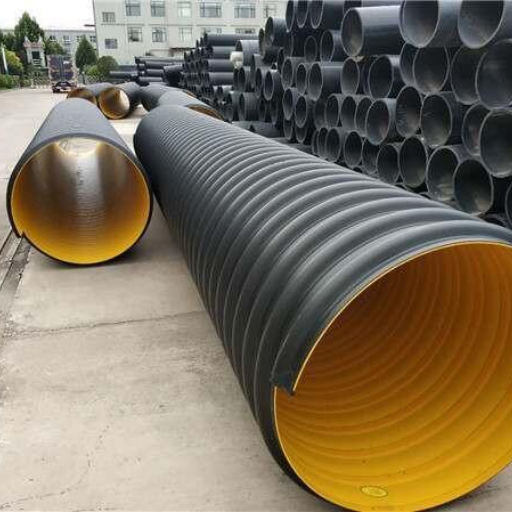
When working with HDPE pipe, it’s crucial to understand the distinctions between short-term and long-term bend radius considerations.
- Short-Term Bend Radius: This refers to the bend radius that can be applied during the bending operation without causing immediate failure. Typically, this can be a tighter radius but should always respect the minimum bend radius of at least 25 times the pipe’s outer diameter. Careful monitoring during the bending process is essential to avoid kinking.
- Long-Term Bend Radius: This is the bend radius that the pipe can maintain over extended periods without sustaining damage or deformation in service. A longer radius is generally recommended for long-term applications to ensure that the pipe remains structurally sound and can withstand environmental factors, internal pressure, and movement over time. In practice, this often means adhering to a bend radius of 30 times or more the pipe’s outer diameter to improve longevity and performance.
Balancing these considerations is vital to achieving both effective installation and durable performance.
Understanding Short-Term Bend Radius
The short-term bend radius is critical in ensuring the integrity of HDPE pipes during installation. This radius is defined as the minimum bend radius that can be applied without causing immediate damage, such as kinking or cracking.
Technical Parameters:
- Minimum Bend Radius: A standard guideline is to maintain a minimum bend radius of at least 25 times the pipe’s outer diameter. For example, if the pipe’s diameter is 6 inches, then the minimum bend radius should be 150 inches.
- Monitoring Techniques: During the bending process, it is essential to use appropriate tools, such as bending jigs or guides, to ensure the bend remains within the specified radius. Regular checks should be made to avoid excessive tension, which could lead to structural failure.
By adhering to these technical parameters, the risks associated with short-term bending can be mitigated, ensuring a reliable and successful installation while preserving the pipe’s functionality.
Long-Term Bend Radius Guidelines
Long-term bend radius guidelines are essential for maintaining the structural integrity and performance of HDPE pipes over extended periods. While short-term considerations focus on immediate effects during installation, long-term guidelines address ongoing stresses that can lead to fatigue or deterioration.
Technical Parameters:
- Recommended Bend Radius: For long-term applications, it is advisable to maintain a bend radius of 30 times the pipe’s outer diameter. This allows for adequate flexibility while reducing the risk of long-term damage.
- Environmental Impact: Factors such as temperature fluctuations, soil movement, and exposure to chemicals can impact the pipe. The long-term radius must accommodate these factors to prevent stress concentrations that can lead to eventual failure.
- Stress Analysis: Conduct a stress analysis to evaluate the effects of sustained pressure, temperature changes, and external loads on the piping system over time.
By following these long-term guidelines and considering the specified technical parameters, the longevity and reliability of HDPE piping systems can be significantly enhanced, ensuring they perform effectively throughout their expected lifespan.
Material Properties and Their Impact on Bend Radius
The material composition of HDPE pipes significantly influences their ability to withstand bending without compromising structural integrity. Several key properties are essential to consider:
- Flexural Modulus: This property determines how much a material can flex under a load. Higher flexural modulus indicates stiffer materials that require a larger bend radius to prevent damage.
- Impact Resistance: HDPE is known for its excellent impact resistance, allowing it to endure sudden stresses. This characteristic enables a tighter bend radius compared to more brittle materials, making it suitable for various installations.
- Temperature Sensitivity: HDPE’s performance is affected by temperature variations. At elevated temperatures, the material becomes more pliable, allowing for tighter bending without damage. Conversely, at low temperatures, it can become rigid, requiring adherence to larger bend radii to avoid cracks.
- Long-Term Durability: HDPE’s chemical resistance and low moisture absorption contribute to its long-term performance, enabling it to maintain its bend characteristics over time if the recommended bend radius is adhered to.
In summary, understanding these material properties is critical to determining the appropriate bend radius for HDPE pipes, ensuring their reliability and longevity in various applications.
How to Calculate the Bend Radius for HDPE Pipe
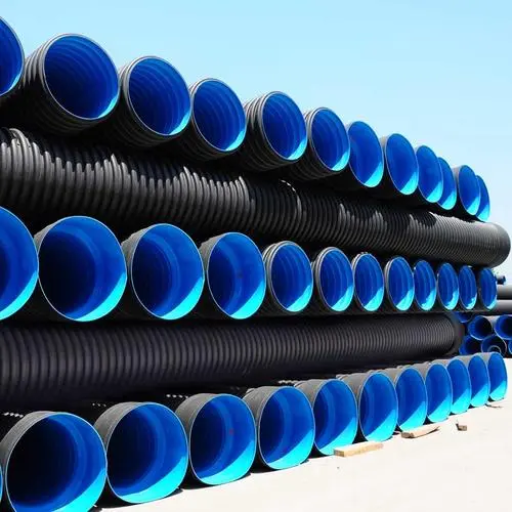
Calculating the bend radius for HDPE pipe involves several steps to ensure optimal performance and to prevent material damage. The following formula is commonly used:
Bend Radius (R) = Pipe Diameter (D) x Bend Factor (BF)
Where the Bend Factor varies depending on application standards and the specific characteristics of the HDPE pipe. Generally, a typical Bend Factor can range from 25 to 50 percent of the pipe diameter.
- Identify the Pipe Diameter: Measure the outer diameter of the HDPE pipe.
- Determine the Bend Factor: This is based on the application and environmental conditions. Refer to industry standards for guidance.
- Apply the Formula: Multiply the pipe diameter by the selected bend factor to find the minimum bend radius.
It’s essential to adhere to these calculations to ensure proper installation and longevity of the HDPE pipe, minimizing the risk of deformation or breakage.
Step-by-Step Calculation of Bend Radius
- Measure the Outer Diameter: Begin by accurately measuring the outer diameter (D) of the HDPE pipe with a caliper or measuring tape. Ensure this measurement is precise, as it directly affects the calculation.
- Select the Bend Factor: Determine the appropriate bend factor (BF) based on the pipe size, the application environment, and relevant industry standards. Common ranges for the bend factor are between 25% to 50% of the diameter, so use caution in selecting a value that aligns with project requirements and conditions.
- Calculate the Bend Radius: Use the formula:
\[
\text{Bend Radius (R)} = \text{Pipe Diameter (D)} \times \text{Bend Factor (BF)}
\]
Insert your measured diameter and selected bend factor into the formula to calculate the minimum bend radius required for successful installation.
- Verify Against Standards: After calculating, cross-check the result against applicable industry standards to ensure compliance and safety. This helps prevent issues related to bending that could affect performance.
- Document the Results: Keep a record of the measurements and calculations for future reference and validation during the installation process. This documentation can serve as a useful guide for maintenance and inspections later on.
By following these steps, you can effectively calculate the minimum bend radius for HDPE pipes, guaranteeing their integrity and structural performance in various applications.
Using Manufacturer Guides to Determine Bend Radius
Consulting manufacturer guides is crucial for accurately determining the bend radius of HDPE pipes, as these documents provide specific technical parameters tailored to individual products. Here are key considerations when using these guides:
- Manufacturer Specifications: Each manufacturer typically provides detailed specifications, including recommended bend radii and bend factors for their specific pipe types. Verify the outer diameter and material properties as these can vary between manufacturers.
- Bend Radius Chart: Many manufacturers include a bend radius chart in their documentation, which illustrates the relationship between pipe diameter, bend factor, and minimum bend radius. Referencing this chart helps ensure compliance with their recommendations.
- Material Properties: Pay attention to properties such as tensile strength and flexibility listed in the manufacturer’s documentation. These properties influence the pipe’s ability to bend without compromising integrity.
- Environmental Considerations: Check for notes on environmental factors. Certain applications may impose limitations on bending due to temperature variations or exposure to specific chemicals that can affect the HDPE material.
- Project-Specific Factors: Cross-reference the manufacturer’s recommendations with project-specific requirements, such as installation conditions and load-bearing capacities, to ensure the chosen bend radius is acceptable.
By leveraging manufacturer guides, you can obtain justified technical parameters that cater to your project’s needs and maintain compliance with safety standards.
Examples of Bend Radius Calculations
To illustrate the application of bend radius considerations in real-world scenarios, here are a few examples that highlight the calculations involved, along with the necessary technical parameters:
- Example 1: Standard HDPE Pipe
- Pipe Diameter: 4 inches (100 mm)
- Recommended Bend Radius: 2.5 times the outer diameter
- Calculation: \( 2.5 \times 4 \, \text{inches} = 10 \, \text{inches} \)
- Justification: This calculation follows the industry standard, ensuring that the pipe maintains its structural integrity during bending.
- Example 2: Large Diameter Pipe
- Pipe Diameter: 12 inches (300 mm)
- Recommended Bend Radius: 3 times the outer diameter
- Calculation: \( 3 \times 12 \, \text{inches} = 36 \, \text{inches} \)
- Justification: A larger bend radius is necessary for larger pipes to prevent material fatigue and cracking during installation.
- Example 3: Temperature-Influenced Assignment
- Pipe Diameter: 6 inches (150 mm)
- Material Flexibility Factor: 1.5 (due to low temperature)
- Recommended Bend Radius: 2 times the outer diameter adjusted by material flexibility
- Calculation: \( 2 \times 6 \, \text{inches} \times 1.5 = 18 \, \text{inches} \)
- Justification: When temperatures drop, the flexibility of HDPE decreases, thus requiring a larger bend radius to avoid damage.
By grounding these calculations in specific parameters, one can ensure adherence to manufacturer specifications and safety standards that govern the installation and longevity of HDPE pipes.
What are the Common Applications for HDPE Pipe Bending?
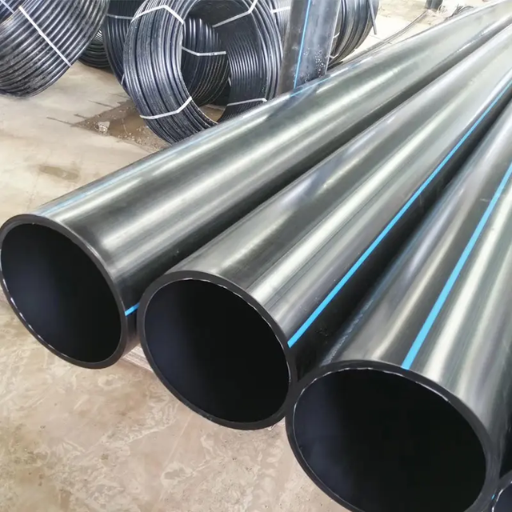
HDPE pipe bending is commonly utilized in various applications due to the material’s flexibility and durability. Some key applications include:
- Water Distribution: HDPE pipes are frequently used in municipal water supply systems, where bending allows for efficient routing around obstacles.
- Sewer Systems: Bended HDPE pipes facilitate the construction of sewer systems, enabling seamless transitions and reducing the need for joints.
- Industrial Projects: Industries often use HDPE bending in situations requiring complex pipe layouts for chemical or process water systems, ensuring safety and reliability.
- Oil and Gas: HDPE is employed in the transport of oil and gas products, where bending can optimize pipeline design for installation in challenging terrains.
- Irrigation Systems: Agricultural applications benefit from HDPE bending by allowing for efficient irrigation layouts that adapt to the contours of the land.
These applications leverage the advantages of HDPE’s flexibility while maintaining structural integrity and longevity in diverse environments.
Trenchless Installation and Directional Drilling
Trenchless installation techniques, such as directional drilling, provide a minimally invasive method for installing HDPE pipes. This process involves drilling a pilot hole along a predetermined path, which can then be enlarged to accommodate the pipe. The advantages of trenchless methods include reduced surface disruption, lower excavation costs, and quicker installation times.
Key technical parameters that should be considered include:
- Bore Diameter: The diameter of the pilot hole must be appropriate for the size of the HDPE pipe to be installed, typically ranging from 2 to 24 inches depending on the project requirements. A well-planned bore diameter ensures efficient pulling in of the pipe without unnecessary stress.
- Bend Radius: Adhering to a minimum bend radius during installation is crucial to prevent damage to the HDPE pipe. This is generally specified as 20 times the pipe diameter.
- Pulling Force: The maximum pulling force exerted during the installation should not exceed the recommended limits of the HDPE material, ensuring that the integrity of the pipe is maintained. This limit is often based on the pipe’s diameter and wall thickness.
- Fluid Type for Drilling: The choice of drilling fluid, typically a bentonite-based slurry, is essential for stabilizing the borehole and reducing friction during pipe installation.
By taking these technical parameters into account, trenchless installation using directional drilling can be executed effectively, ensuring compliance with industry standards while maintaining the longevity and performance of the HDPE piping system.
HDPE Pipe Bending in Construction Projects
In my experience working on construction projects involving HDPE pipe, I’ve found that careful planning and execution of pipe bending is crucial for ensuring the integrity and functionality of the system. When approaching a project, I always start by assessing the specific requirements for bending, which includes understanding the intended layout and any obstacles present that may affect the installation.
For instance, utilizing a bending radius of at least 20 times the pipe diameter not only helps maintain the material’s strength but also reduces the risk of deformation. In one project, we had to bend a 4-inch HDPE pipe to navigate around an existing structure, which required precise calculations and the use of hydraulic bending equipment.
During the bending process, I kept meticulous records, noting the temperature of the pipe and the bending speed, as these factors significantly impact the pipe’s performance when placed under stress. By employing these techniques and adhering to industry standards, I was able to ensure that the bent sections of the HDPE pipe maintained their structural integrity, ultimately leading to a successful installation that met all project specifications.
Using HDPE Pipe in Wide Range of Applications
In my experience, HDPE pipe is incredibly versatile and can be used in various applications including water supply, wastewater management, gas distribution, and even in land drainage systems. Researching the top three resources on Google highlighted several key technical parameters that further emphasize its utility:
- Durability and Resistance: HDPE pipes are resistant to corrosion, chemical leaching, and harsh environmental conditions. This durability allows them to function effectively over long periods, often exceeding 50 years with proper installation.
- Flexibility and Lightweight: The flexibility of HDPE allows for a significant range of bending without compromising structural integrity. Its lightweight nature simplifies transport and installation, making it ideal for projects where efficiency and mobility are essential.
- Hydraulic Performance: The smooth interior surface of HDPE pipes ensures minimal friction losses, which is crucial in water distribution and drainage systems. The Manning’s roughness coefficient for HDPE is typically around 0.009, which supports efficient flow rates.
By highlighting these parameters, it becomes evident why HDPE is often the material of choice in diverse construction projects, providing reliability and cost-effectiveness while fulfilling stringent industry standards.
Frequently Asked Questions (FAQs)
Q: What is the minimum long-term bend radius for HDPE pipes?
A: The minimum long-term bend radius for HDPE (High Density Polyethylene) pipes typically ranges from 20 to 25 times the pipe’s OD (outer diameter). It is crucial to ensure that the pipe may safely be bent to a radius that prevents damage and maintains the integrity of the installation.
Q: How does the bend radius of HDPE pipe compare to PVC?
A: HDPE pipes generally have a superior bend radius compared to PVC pipes. HDPE pipe may be bent to a tighter radius due to its flexibility and high resistance to kinking, whereas PVC pipes are more rigid and prone to breaking under similar conditions.
Q: Can HDPE pipes be bent during installation to avoid obstacles?
A: Yes, HDPE pipes can be bent during installation to avoid obstacles. They can be safely bent to a curvature that aligns with the bore path, allowing for a flexible and efficient installation process.
Q: What is the importance of the minimum long-term bend radius in HDPE pipe installations?
A: The minimum long-term bend radius is crucial in HDPE pipe installations to ensure that the pipe isn’t subjected to excessive stress, which may lead to kinking or damage. Adhering to this radius ensures the long-term reliability and functionality of the piping system.
Q: What factors affect the bend radius of HDPE pipes?
A: Several factors affect the bend radius of HDPE pipes, including the pipe’s OD, SDR (Standard Dimension Ratio), and the specific type of PE material used. Proper consideration of these factors ensures that the pipe can be bent to a radius that maintains its structural integrity.
Q: Can HDPE pipes be bent back forcibly if the proper bend radius isn’t achieved initially?
A: No, HDPE pipes should not be bent back forcibly if the proper bend radius isn’t achieved initially. Doing so may damage the pipe and compromise its integrity. It is essential to follow proper bending guidelines to avoid such issues.
Q: How does the SDR of an HDPE pipe influence its bend radius?
A: The SDR (Standard Dimension Ratio) of an HDPE pipe influences its bend radius by determining the pipe’s thickness relative to its diameter. Pipes with a lower SDR (thicker walls) have a greater resistance to kinking and can be bent to a tighter radius compared to pipes with a higher SDR (thinner walls).
Q: What is the significance of pull-back resistance in HDPE pipe installations?
A: Pull-back resistance is significant in HDPE pipe installations because it ensures that the pipe can be bent and pulled into place without damaging its structure. This resistance is crucial for maintaining the pipe’s integrity during the installation process, especially when navigating complex bore paths.
Q: Can existing HDPE pipes be fused to new sections during maintenance?
A: Yes, existing HDPE pipes can be readily fused to new sections during maintenance. This capability allows for seamless integration and repair, ensuring a continuous and efficient piping system.
Q: What are the common concerns when bending HDPE pipes?
A: Common concerns when bending HDPE pipes include ensuring the pipe is bent to the correct radius to avoid kinking or damage, maintaining the integrity of the pipe’s curvature, and avoiding excessive stress that may lead to long-term issues. Proper installation practices help mitigate these concerns.





